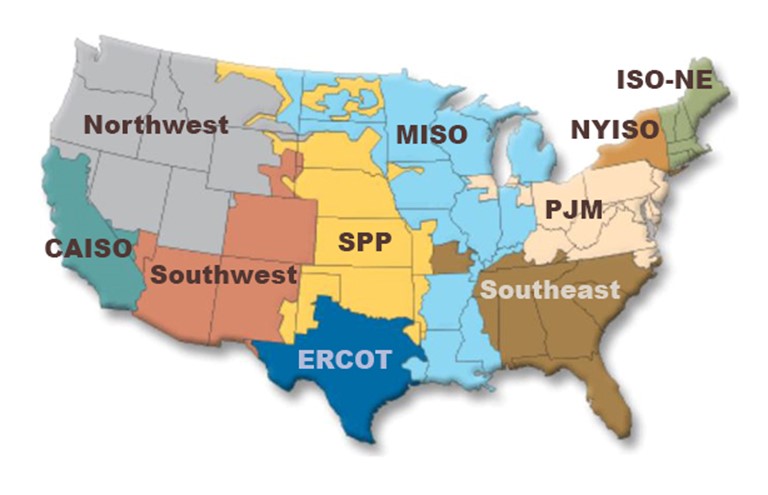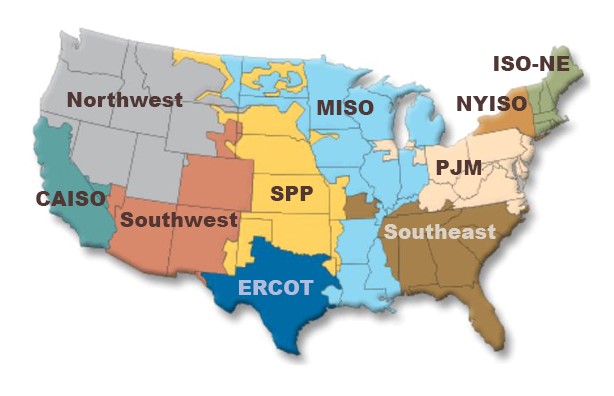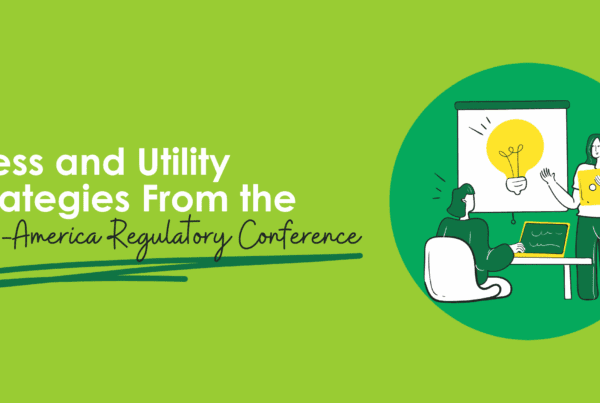
The electric grid is the most complex beast on the planet, ever. Let’s set the table. Electricity has been inexpensive and very reliable in the US for the better part of 100 years. At first, electric utilities were hub and spoke systems that sent power from the hub (power plant) to customers around its service territory. Then, high voltage transmission systems were used to interconnect the hubs for reliability-sake, redundancy, and likely lower prices. Neighboring utilities cut deals to buy and sell power to each other to further keep prices low for their customers. And, of course, electricity sales kept increasing at an annual rate of 5-7%. Since they made money on building stuff for the expanding market, all was swell for decades.
Electricity grids expanded across state lines. The 1992 Energy Policy Act established the basis for competitive wholesale electricity markets. The Federal Energy Regulatory Commission’s (FERC) order 888 in 1996 established open and fair access to the transmission system so companies that owned both generation and transmission systems would not have too much market power over the transmission system. Think of the railroad robber barons of yore; somebody learned from history how the seven deadly sins (especially greed) control man.
As a result of FERC Order 888, 24 states passed legislation for vertically integrated utilities (which own everything from the coal pile to the customer meter and are responsible for keeping the lights on) to divest their power plants, leaving them with transmission and distribution. The result of this is the parent companies (e.g., Exelon) now own the power plants of the operating companies (e.g., PECO, BG&E, PEPCO, ComEd, etc.).
Wild Times
The late 1990s were crazy. Utilities acted like gun-slinging Silicon Valley startups, investing in real estate, resorts, power generators overseas, and telecom companies. Of course, that all ended badly, nearly sinking some utilities. Meanwhile, California deregulated its wholesale market but not the retail market. Enron cornered the wholesale market with excessive market power (see robber barons above). The system essentially collapsed with bankruptcies, and people with names of Skilling and Lay went to jail [1]. The parasite killed its host. Deregulation was an unmitigated success by any measure!
The Energy Policy Act of 2005 established that FERC would regulate the interstate exchanges of oil, natural gas, and electricity. FERC ensures equal access to electrons crossing state lines from generators. State utility commissions regulate electricity prices, or at least the distribution system owned by utilities in deregulated territories.
See how complex it is? We’re not done yet.
Regional Transmission Organizations
In 1999, Order 2000 from FERC established the multi-state regional transmission organizations (RTO) [2], formerly known as independent system operators (ISO). Any ISO namesake today is really an RTO. The difference is RTOs run the competitive electricity market, whereas ISOs originally planned and managed transmission and power supply adequacy.
Now we have states with utilities that belong to these various RTOs shown in the map below. Some states have renewable energy portfolio standards (RPS), which require a certain percentage of renewable power generation, typically from 15-50% or more. Can you see the problem this creates in a “competitive” market? It forces varying degrees of oversupply of cheap unreliable power in some states but not others. West-by-God Virginia, for example, may want nothing to do with renewables, while Maryland, Virginia, and New Jersey have big RPS goals. So WbGV complains that the flood of low, no, or even negatively-priced renewable energy is killing its power plants. The solution? MOPR, the minimum offer price rule, sets a price floor in the market.
Impact of the Minimum Offer Price Rule
You guessed it, now some states, like Connecticut in ISO New England’s market, are complaining about the MOPR because they see it as charging their constituents twice for power: once for the foisted renewable generation and again with the MOPR.
This sets up a lot of conflict. Some states are threatening to drop out of their RTO, even though utilities, not states, choose which RTO to join. I’m happy to observe this conflict from the sidelines. Electricity reliability and security costs money. Katie Dykes, commissioner with the Connecticut Department of Energy and Environmental Protection is quoted: “Because of the lack of leadership on carbon at the ISO-New England, we are at the mercy of a regional capacity market that’s driving investment in more natural gas and fossil fuel power plants that we don’t want and that we don’t need.” I am reminded again of Public Utilities Fortnightly, Charles Bayless: “Casual observers are often wrong.” The least expensive backup to the absence of renewable power is natural gas.
Here in Wisconsin, we had the same casual observations about the Badger Coulee transmission line that was finally built and moving electrons. It connects the windswept plains of power generation to population centers of Southeastern Wisconsin and Chicago. “We don’t need it,” said the casual observers in protest before Badger Coulee was built. I know what I don’t know; the definition of what “need” means, what is cost-effective, and the billion parameters that affect the calculation. I do know that transmission is needed to move power from where the wind blows to where it is used. Is it “cost-effective?” Compared to what? I’m not qualified for that answer.
I would say for anyone favoring reliance on intermittent renewables over dispatchable power generation, go for it, but you own the outages that come with it. Yes, reliable, clean power costs more because redundancy is required.
The FERC’s Next Chapter
The next evolution of FERC is Order 2222, which opens the grid to all kinds of resources, including those owned by energy consumers, maybe even grid-interactive efficient buildings. Utilities and RTOs are figuring out how to manage and handle this 10x expansion in complexity.
[1] https://www.cnbc.com/2019/03/23/former-enron-ceo-jeffrey-skilling-wants-back-into-the-energy-business.html
[2] https://www.ftc.gov/sites/default/files/documents/public_events/Energy%20Markets%20in%20the%2021st%20Century:%20Competition%20Policy%20in%20Perspective/slocum_dereg.pdf





